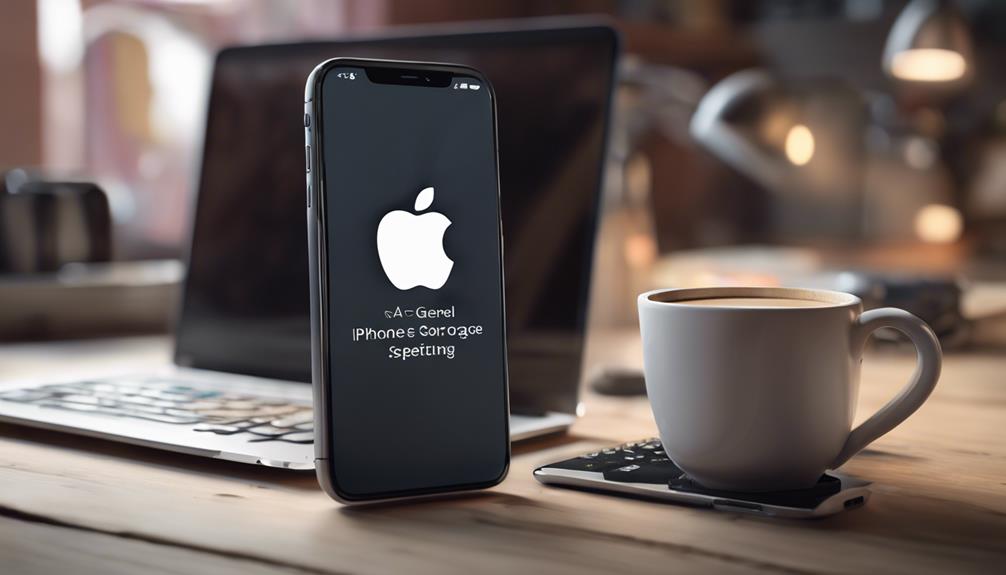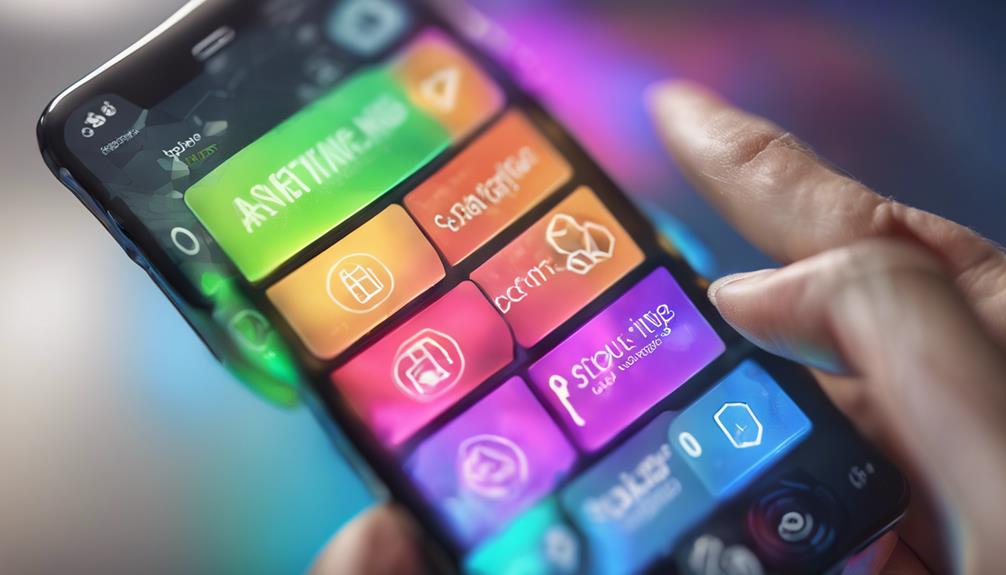To clear an app's cache, start by accessing your device's settings. On Android, navigate to Settings > Apps > select the app > Storage, and tap 'Clear Cache.' For iOS, there's no direct option; instead, go to Settings > General > iPhone Storage, select the app, and choose 'Offload App' if available. For Windows, use the Disk Cleanup tool or go to Settings > Apps > select the app > Advanced options > Reset. On Mac, open Finder, go to the Library folder, locate the Caches folder, and delete the relevant files. These methods can improve your device's performance and responsiveness.
Key Takeaways
- On Android, navigate to Settings > Apps, select the app, and choose Storage to clear the cache.
- For iOS, offload the app via Settings > General > iPhone Storage or reinstall the app to clear the cache.
- On Windows, use Disk Cleanup by pressing the Windows key and selecting Temporary files to clear cached data.
- On Mac, access Finder, hold Option to select Library, find the Caches folder, and delete relevant cache files.
Understanding App Cache

App cache is a temporary storage area that helps apps load faster by saving data like images and files you frequently use. Understanding app cache involves knowing the various cache types. The two main types are memory cache and disk cache. Memory cache stores data for quick access during your current session, while disk cache saves data permanently until you decide to clear it.
Effective cache management is vital for maintaining your device's performance. This means regularly reviewing what data is stored, guaranteeing it's relevant, and deleting old or unnecessary files. By doing this, you can prevent apps from slowing down and make sure they function smoothly.
You might wonder how to monitor this cache. Most devices have built-in options to check and manage cache settings. Knowing how to navigate these settings empowers you to take control of your app experiences, helping you feel more connected and in charge.
Benefits of Clearing Cache

Clearing cache regularly can boost your device's performance and free up valuable storage space. When you clear the cache, you eliminate temporary files that apps create while running. These files can accumulate over time, slowing down your device and consuming precious storage. By managing your storage effectively, you can guarantee your device runs smoothly and efficiently.
You'll notice a significant performance improvement after clearing the cache. Apps may load faster, and your device will feel more responsive. This is especially important if you're using popular apps that tend to store a lot of data. Plus, when you clear the cache, you're also reducing the risk of glitches and crashes that can occur when the cache gets overloaded.
Additionally, clearing cache helps maintain your device's overall health. It allows for better storage management, enabling you to keep your apps updated and your device operating at its best.
Clearing Cache on Android

To clear the cache on your Android device, head to the settings menu for a quick and straightforward process. This helps improve Android performance by freeing up storage and ensuring apps run smoothly. Here's how to do it:
- Open your Settings.
- Tap on Apps or Application Manager.
- Select the app you want to clear the cache for.
- Tap on Storage and then choose Clear Cache.
To give you a better idea of cache management, check out the table below:
| Action | Description |
|---|---|
| Clear Cache | Removes temporary files |
| Clear Data | Resets the app to default settings |
| Uninstall App | Deletes the app and all its data |
| Restart Device | Refreshes system resources |
Clearing Cache on Ios

Managing cache on iOS can help optimize your device's performance, just like on Android, and here's how you can do it.
First, you won't find a direct cache-clearing option in iOS settings, but you can manage app data effectively.
To start, go to Settings > General > iPhone Storage. Here, you'll see a list of apps and how much storage they're using, including their cache. Tap on any app that seems to be hogging storage. If the app allows, you'll see an option to “Offload App.” This removes the app but keeps its documents and data intact. When you reinstall it, you'll have a fresh version.
For apps that don't support offloading, you may need to delete and reinstall them. This clears all cached app data and can greatly improve iOS performance.
Lastly, regularly reviewing and clearing out unused apps not only helps with cache management but also keeps your device running smoothly. By taking these steps, you'll guarantee your iOS device remains efficient and responsive, making your overall experience much more enjoyable.
Clearing Cache on Windows

You can easily clear an app's cache on Windows to free up space and boost performance. Using built-in Windows tools makes cache management simple and effective.
Start by pressing the Windows key, then type “Disk Cleanup” and select the app. Choose the drive you want to clean, typically the C: drive, and click “OK.” The tool will scan for files to remove.
Once the scan is complete, check the box next to “Temporary files” and any other categories you want to clear. Click “OK” to delete those files, including cached data.
For individual apps, you can also access the settings directly. Go to “Settings,” then “Apps,” and select the app you want to manage. Click on “Advanced options,” then find the “Reset” button. This will clear the cache specific to that app.
Don't forget to regularly clear your cache; it helps maintain your system's speed and efficiency. Embracing these Windows tools for cache management will keep your device running smoothly, making you feel more connected with the tech around you.
Enjoy a cleaner, faster Windows experience!
Clearing Cache on Mac

Clearing an app's cache on a Mac is straightforward and can help improve system performance similar to the process on Windows.
To get started, open Finder and navigate to the 'Go' menu at the top of your screen. Hold down the 'Option' key and select 'Library' from the dropdown. In the Library folder, find the 'Caches' folder.
Once you're in the Caches folder, you'll see subfolders for various apps. Identify the app whose cache you want to clear. Simply drag the relevant folder to the Trash. This process is a key part of effective cache management, aiding your Mac run smoother.
After deleting the cache, it's a good idea to empty the Trash to finalize the process. If you're looking for mac optimization, consider restarting your computer afterward. This guarantees that any changes take effect and that your system operates at peak performance.
Tips for Regular Maintenance

Regular maintenance helps keep your apps running smoothly and can prevent performance issues down the line. Implementing effective cache management strategies is key. Here are some routine maintenance tips to keep in mind:
- Schedule Regular Cache Clearings: Set a reminder every few weeks to clear your app cache. This keeps your storage space free and your apps responsive.
- Monitor App Performance: Pay attention to how apps behave over time. If you notice slowdowns, it might be a sign you need to clear the cache more frequently.
- Update Apps Regularly: Check for app updates and install them. Developers often optimize performance and fix bugs, enhancing your overall experience.
- Uninstall Unused Apps: If there are apps you rarely use, consider uninstalling them. This not only clears cache but also frees up storage space, improving your device's performance.
Troubleshooting Cache Issues

Identifying and troubleshooting cache issues can greatly improve app performance and user experience. If your app is slow, crashing, or behaving unexpectedly, cache corruption might be the culprit. Start by clearing the cache to see if that resolves the problem. You can usually find this option in the app settings under storage or performance.
If clearing the cache doesn't help, it's time to employ some troubleshooting techniques. First, check for app updates; developers often release patches to address bugs. If the issue persists, try reinstalling the app. This can eliminate any corrupted files that may be causing the trouble.
Also, consider checking your device's storage space. A lack of available space can lead to cache issues, so verify you have enough room for the app to function properly.
Conclusion
Clearing an app's cache is like giving your device a fresh breath of air.
Just as a cluttered room can hinder your focus, a full cache can slow down your apps.
By regularly clearing the cache, you keep your device running smoothly and efficiently.
So, think of it as a quick spring cleaning for your apps—simple, effective, and worth the effort.
Make it a habit, and your device will thank you with better performance!






